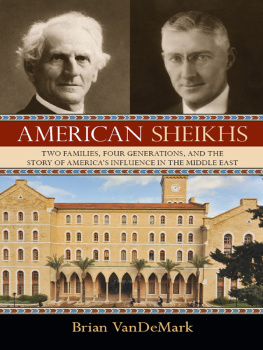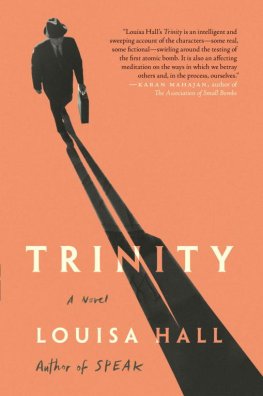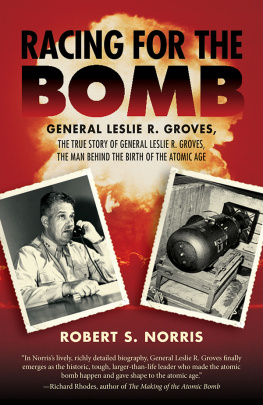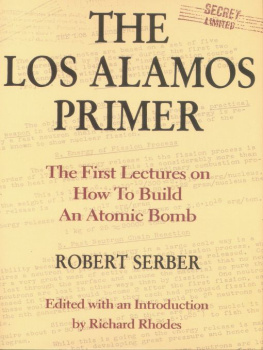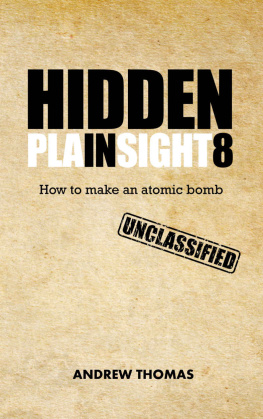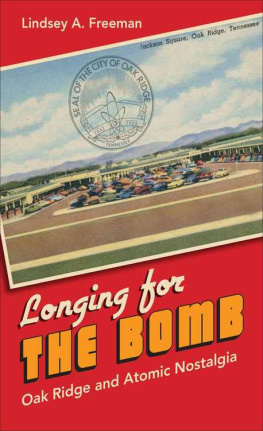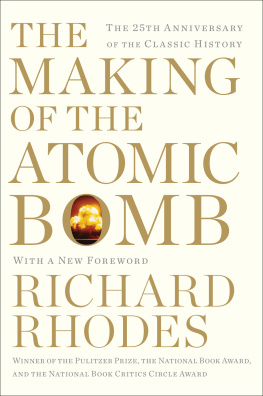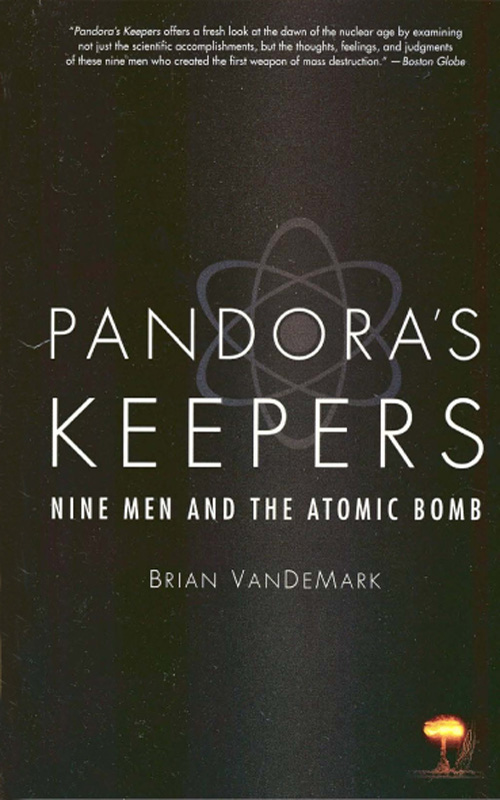Copyright 2003 by Brian VanDeMark
All rights reserved. No part of this book may be reproduced
in any form or by any electronic or mechanical means,
including information storage and retrieval systems, without permission
in writing from the publisher, except by a reviewer
who may quote brief passages in a review.
Back Bay Books / Little, Brown and Company
Hachette Book Group
237 Park Avenue
New York, NY 10017
Visit our website at www.HachetteBookGroup.com
www.twitter.com/littlebrown
First eBook Edition: September 2009
ISBN: 978-0-7595-2807-9
INTO THE QUAGMIRE
IN RETROSPECT (with Robert McNamara)
TO
ROBERT DALLEK AND ROBERT MCNAMARA

Mentors and Friends

This is the story of nine men who helped create the atomic bomb, which forever changed their lives and the world. Their story is a compelling one, filled with elements of great drama, emotion, irony, and tragedy. It is not surprising, therefore, that the story of the bombs creation has been told often, and well, by others much more knowledgeable about nuclear physics than I. My aim is different. It is to explore the human story behind the atomic bomb by probing its creators thoughts, feelings, and judgments. What motivated them? How did they relate to one another? How did they deal with the political and moral issues posed by nuclear weapons? Put simply: Why did they do it, and what did it mean to them?
People usually think about what the atomic scientists did, instead of who they were, because they do not see them as human beings with personal histories and emotional lives, heartssometimes brokenas well as heads. Scientists themselves have contributed to this popular image. Very often they have represented themselves as calmly rational and coldly objectiveabove human frailty and unaware of mans condition. But scientists are first and foremost people, people who know just how imaginative and human an enterprise science really is.
All of this suggests that the history the atomic scientists made is not as simple as people have usually portrayed it. Numerous myths and caricatures have grown up around the atomic scientists (and the bomb) since 1945. Too often these men (and they were almost all men) have been flat screens on which one-dimensional fictions and fantasies were projected. But the atomic scientists were not all good; they were not all bad. To understand them is to recognize their good intentions and at the same time to confront the doubtful morality of their achievement. Good history does not fear ambiguity, nor does it reduce complex and sometimes contradictory individuals to simple stereotypes.
Physics, like everything that is potentially constructive, can be put to destructive ends. It has two faces, benign and threatening, bringing blessings and curses. Each of the atomic scientists, like each of us, can make imperfect choices that seem reasonableeven responsiblein the context of the times but are impossible to undo once the course is set. They, like us, do things they think are right at the time, and later come to regret them. They, like us, have rich human stories of ambition and disappointment, achievement and failure, cooperation and rivalry, jealousy and revenge. Their story helps illuminate how people deal with circumstances, the legacy of creation, and an imperfect world that sometimes forges good from evil and evil from good. Their story has moral reverberation, that strange and haunting quality generated by a tale that is not always pleasant but that entrances us because it has an effect beyond itself. This effect may be as simple as inspiring us to do something practical about the legacy of their creation, or at least to feel that we should.
Many physicists contributed to the making of the atomic bomb. Clearly, not all of them can be treated, not even in a big book like this one. I therefore used three criteria to select the subjects of this study: 1. those who contributed centrally to the bombs creation; 2. those who voiced moral and political judgments about the bomb; and 3. those whose views represented a range of opinions and responses. Based on these criteria, I chose to write about the following nine physicists, in alphabetical order:
Hans Bethe
Niels Bohr
Arthur Compton
Enrico Fermi
Ernest Lawrence
Robert Oppenheimer
I. I. Rabi
Leo Szilard
Edward Teller
This book treats these nine physicists as a group rather than as discrete subjects. It seeks to integrate what might otherwise be a string of disparate biographies into something like a history of a scientific generation, and to do so without slighting either the individual physicist or the larger setting. It follows their intertwined lives chronologically, showing how they related to one another and reacted to the history they made together. Part I traces the atomic scientists effort to build the bomb and, with it, to end World War II. Part II explores how the atomic scientists came to understand the bombs consequences, both for their own lives and for the world they changed forever through their creation.
Two themestwo morals of the storyemerge along the way. The first is how inexorable was the trap into which the atomic scientists fell, a trap largely of their own making. The atomic scientists were deeply thoughtful men, no fools in any way, yet they were drawn into a frenzy of creation, throwing themselves into the enterprise and laboring beyond all expectations of human capacity to produce a weapon of unprecedented destructiveness. The effort quickly took on a life, and a momentum, of its own, a chain reaction from a chain reaction. When it was done, the bomb they had made horrified and frightened them. The atomic scientists originally sought to build something that would save the world and ended up believing what they created might destroy it. They came to fear the very thing they had built to end fear.
The second theme is the political and moral awakening of the atomic scientists. Twentieth-century physics was a great adventure of imagination and intelligence, and until the discovery of fission it was carried on in an ivory tower, far removed from the world of politics. It was pure sciencea contest of the human mind with nature; the object was not to change the world but to understand it. Scientists did physics because it was there to be done and because it was wonderfully interesting. They rarely addressed the political implications of their research or applied moral considerations to their work. They were detached and above such things. But their work on the bomb shook the atomic scientists out of their detachment and forced them to confront larger implications. For the first time, they began to ask questions about politics and morality in the same searching way they had always asked them about Nature. And as they asked these questions, they transformed themselves.
The atomic scientists struggle to come to terms with what they had done is emblematic of the larger and continuing human struggle created by the opening of the Pandoras box of nuclear weapons. Some of the questions the atomic scientists wrestled with, we are still wrestling with now. Today, as we rush headlong into a future filled with the promise of potentially astonishing scientific and technological advances, we are continually drawn back to the most momentous scientific achievement of the twentieth centuryan achievement that raises questions so profound that they seem to transcend time itself.



